In the fold: Issey Miyake, Ikko Tanaka, and the art of fashion
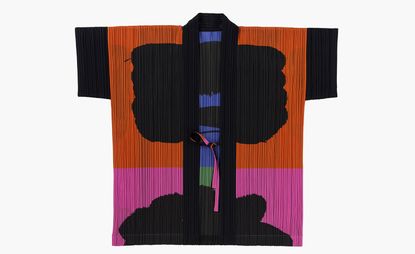
As the distinction between fashion, graphic design and art becomes ever more blurred, Issey Miyake’s latest collaborative offering revels in such indistinction. His new micro-collection is emblazoned with the graphic artwork of Ikko Tanaka, a keystone of 20th century Japanese art. Tanaka’s deceptively simple oeuvre uses block colours and overlaid geometric forms to explore the boundaries of abstraction and realistic portraiture. Once art, now clothing, Miyake revitalises Tanaka’s legacy in this new series of dresses, coats and bags.
Miyake and Tanaka were acquainted, and held each other’s work in high regard. They met in the sixties and maintained a close friendship until Tanaka’s death in 2002. Just over a decade after his passing, Miyake’s reinterpretation of his work is a timely homage, from one Japanese icon to another.
Tanaka’s tome Variations of Bold Symbols (1992) is a mosaic of colour blocks adorned with hand-drawn symbols. It vividly celebrates abstraction and eschews any recognisable human form. His work for the 200th anniversary of the artist Tōshūsai Sharaku’s birth, however, layers circular forms into the shape of a peeping face, a traditional form of portraiture known as Okubi-e for which Sharaku earned his fame. His most famous work, Nihon Buyo (1981), blends these two modes of creation, tessellating stark geometric shapes into the abstract form of a geisha.
While Tanaka’s designs are now most commonly reproduced on posters or in books on Japanese art, Miyake’s creations seek to recontextualise his work, introducing the dynamism of the body to the vitality of the artist’s aesthetic.

Once art, now clothing, Miyake revitalises Tanaka’s legacy in this new series of dresses, coats and bags

Miyake and Tanaka were acquainted and held each other’s work in high regard

Tanaka's tome, Variations of Bold Symbols (1992), offers a compilation of this graphic works, which directly inspired the collection

The pair met in the Sixties and maintained a close friendship until Tanaka’s death in 2002

Launching just over a decade after his passing, Miyake’s reinterpretation of his work is a timely homage, from one Japanese icon to another

Tanaka’s deceptively simple oeuvre uses block colours and overlaid geometric forms to explore the boundaries of abstraction and realistic portraiture

The book offers a mosaic of colour blocks adorned with hand-drawn symbols
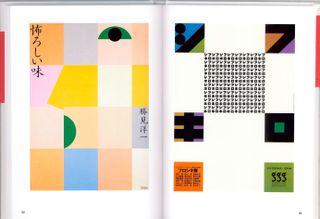
It vividly celebrates abstraction with bold graphic cues

While Tanaka’s designs are now most commonly reproduced on posters or in books on Japanese art, Miyake’s creations seek to recontextualise his work, introducing the dynamism of the body to the vitality of the artist’s aesthetic
INFORMATION
The collection is available exclusively from Issey Miyake’s London ‘Pleats Please’ store and Harvey Nichols Knightsbridge from 18 February 2016. For more information, visit the website
Wallpaper* Newsletter
Receive our daily digest of inspiration, escapism and design stories from around the world direct to your inbox.
-
 Rick Owens’ new Moncler collaboration features a surreal ‘demountable mountain refuge’ inspired by Charlotte Perriand
Rick Owens’ new Moncler collaboration features a surreal ‘demountable mountain refuge’ inspired by Charlotte PerriandYour first look at Rick Owens’ latest Moncler collaboration, a mountain refuge designed alongside extreme-condition experts Hugh Broughton Architects and an accompanying clothing collection made for ‘hibernating’
By Jack Moss Published
-
 The new Ford Capri wants to tap a vein of Gen X nostalgia. Does it succeed?
The new Ford Capri wants to tap a vein of Gen X nostalgia. Does it succeed?We ask if the all-electric Ford Capri can capture the swagger of its much-loved but rather oafish predecessor
By Guy Bird Published
-
 Rug designer Sibylle de Tavernost’s homage to Fernand Léger
Rug designer Sibylle de Tavernost’s homage to Fernand LégerAbstract modern art, craft heritage and contemporary life fuse in Sibylle de Tavernost's new limited-edition rugs
By Harriet Thorpe Published
-
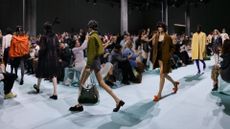 The Wallpaper* S/S 2025 trend report: ‘A rejection of the derivative and the expected’
The Wallpaper* S/S 2025 trend report: ‘A rejection of the derivative and the expected’Wallpaper* fashion features editor Jack Moss unpacks five trends and takeaways from the S/S 2025 shows, which paid ode to individual style and transformed the everyday
By Jack Moss Published
-
 Le Sel d’Issey: the sacred ‘energy of salt’ inspires Issey Miyake’s new fragrance for men
Le Sel d’Issey: the sacred ‘energy of salt’ inspires Issey Miyake’s new fragrance for menAs Issey Miyake’s Le Sel d’Issey launched in Tokyo this week, we spoke with Tokujin Yoshioka about his ‘radiant’ bottle design and the scent's sacred and salty inspiration
By Danielle Demetriou Published
-
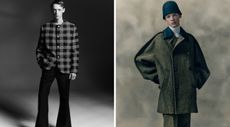 The A/W 2024 menswear collections were defined by a ‘new flamboyance’
The A/W 2024 menswear collections were defined by a ‘new flamboyance’Sleek and streamlined ensembles imbued with a sense of performance take centre stage in ‘Quiet on Set’, a portfolio of the A/W 2024 menswear collections photographed by Matthieu Delbreuve
By Jack Moss Published
-
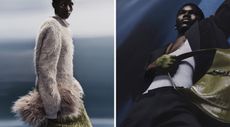 In fashion: the defining looks and trends of the A/W 2024 collections
In fashion: the defining looks and trends of the A/W 2024 collectionsWe highlight the standout moments of the A/W 2024 season, from scrunched-up gloves and seductive leather ties to cocooning balaclavas and decadent feathers
By Jack Moss Published
-
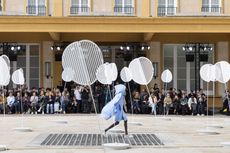 Revisiting the showstopping runway sets of men’s fashion week
Revisiting the showstopping runway sets of men’s fashion weekAs Men’s Fashion Week S/S 2025 draws to a close, Wallpaper* picks the season’s most transporting runway sets, from giant cats at Dior Men to a ‘fairytale ravescape’ at Prada
By Jack Moss Published
-
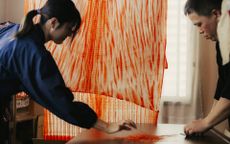 In Kyoto, COS celebrates the ancient art of shibori dyeing with a colour-soaked collection
In Kyoto, COS celebrates the ancient art of shibori dyeing with a colour-soaked collection‘We can’t take this type of craft for granted anymore,’ says COS design director Karin Gustafsson, who worked with Kyoto shibori artisan Kazuki Tabata on the airy summer collection. Wallpaper* heads to Japan’s former capital to find out more
By Jack Moss Published
-
 Inside John Lobb’s sumptuous new Kyoto store, housed in a traditional wooden ‘machiya’
Inside John Lobb’s sumptuous new Kyoto store, housed in a traditional wooden ‘machiya’John Lobb’s inviting new Teruhiro Yanagihara-designed Kyoto store is introduced with a series of images starring lauded Japanese director Hirokazu Kore-eda
By Jack Moss Published
-
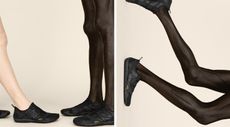 ‘Sensuous physicality’: Issey Miyake reveals barefoot sneaker collaboration with New Balance
‘Sensuous physicality’: Issey Miyake reveals barefoot sneaker collaboration with New BalanceThe Issey Miyake x New Balance MT10O is based on minimalist running sneakers from the 2010s, designed to replicate the feeling of running barefoot
By Jack Moss Published